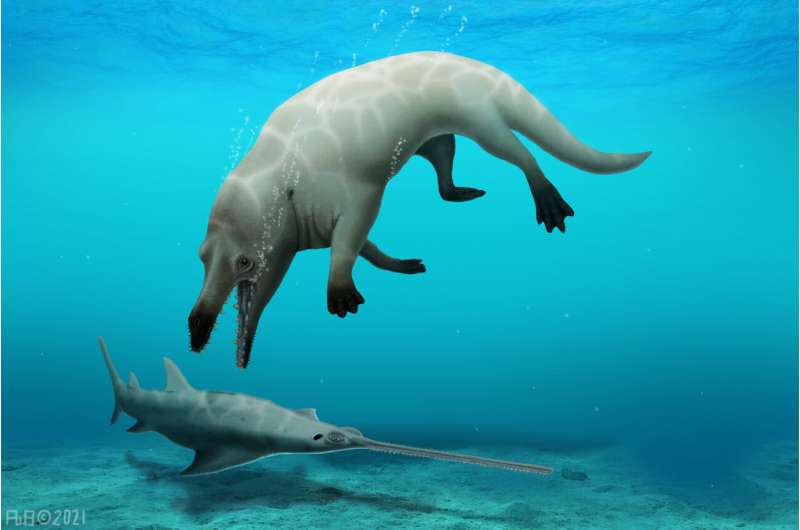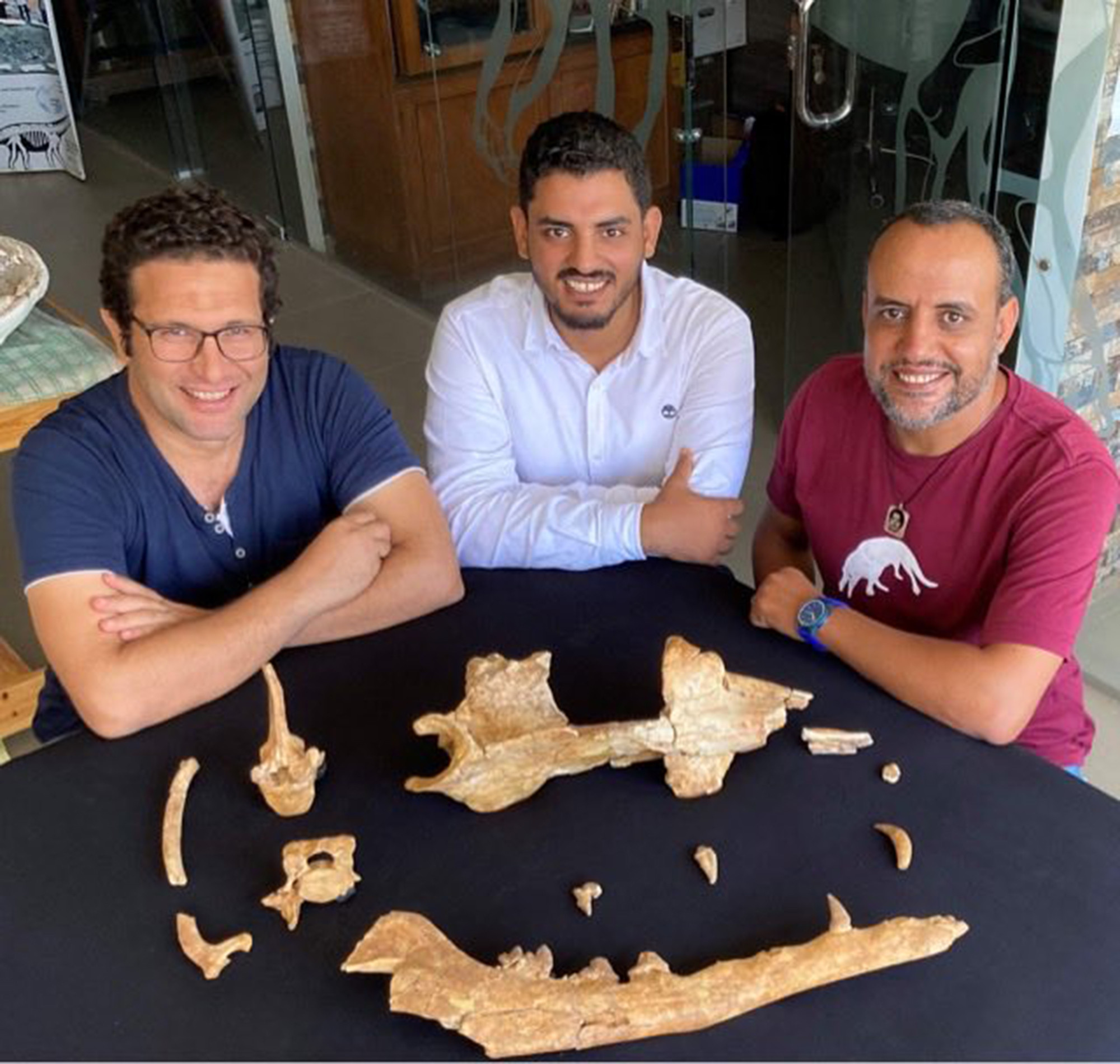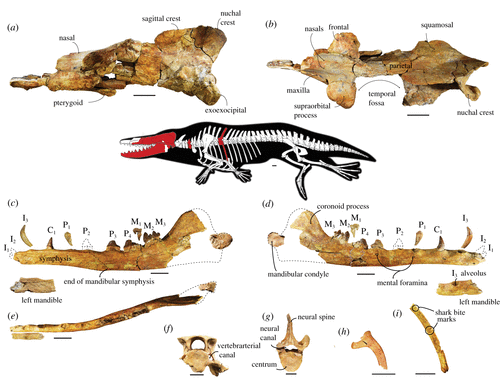Walking on Hypothetical Legs
On September 1st a number of news outlets published stories about the discovery of the skeleton of a whale with four legs. If true, this would lend support to the popular theory that whales evolved from a four-footed land animal which gradually adopted an aquatic way of life.
In most cases the story was illustrated by an artist’s conception provided by one of the discoverers of the skeleton:
All of the news stories I read leave the reader with the distinct impression that the skeleton as found actually has four legs.
The only hint this might not be strictly true come from this photograph which appears in some of the news stories:
Hmmm. These don’t look like legs. But maybe the bones include parts where legs were clearly once attached. Let’s go to their paper published in the Proceedings of the Royal Society. There we find this helpful diagram:
The bones drawn in red in the drawing in the center are what they found. As you can see, there are not only no legs, there are no hips, and no shoulders either. How then did they conclude that this creature had four legs? Returning to the scholarly article:
“Long neural spines on anterior thoracic vertebrae are part of the suspensory system seen in land mammals, and suggests that Phiomicetus was capable of supporting its weight on land like most other protocetids.”
So the presence of legs is a conjecture based on comparing the vertebrae with those of land mammals. Now I am by no means an expert on the subject, but I suspect that this is subjective judgement informed by context. Judging from the scholarly article, the metaphysical views of the researchers are an important part of that context. Theory permeates the whole article. For example, we have this diagram:
Clearly the researchers’ conjecture about the form of the missing limbs is heavily influenced by a desire to identify the creature as a proto-whale and place it in an evolutionary sequence leading to modern whales. The creature’s proposed position in the sequence implies legs. The vertebrae are consistent with legs, therefore this is a four-legged whale.
These researchers are surely aware that the evolution of a whale from a deer-like mammal in only 10 million years (at best) is implausible in the extreme. It is not just the usual question of how blind forces could perform such a heroic feat of genetic engineering. Purely from a standpoint of population genetics there simply are not enough years, nor enough whales, nor is their generation time short enough to produce and fix in the population anything even close to the required number of mutations.
But if you have eliminated intelligent design a priori, then there must be some mystical force as yet unknown to science which can produce these changes even in so short a time. The very existence of modern whales allows no other conclusion since otherwise they would have no origin.
There is nothing wrong with the scholarly article since it does not imply that they found actual legs. If the authors want to pursue their metaphysical convictions, they have that right. But the popular articles are grossly misleading. A more accurate description of what has occurred would be: “Researches in search of hypothetical walking whale offer candidate, argue skeleton once had legs.”



